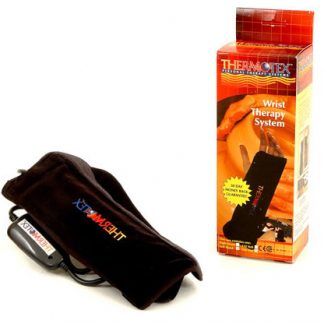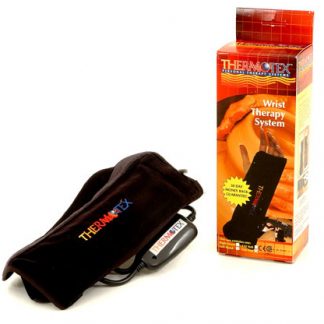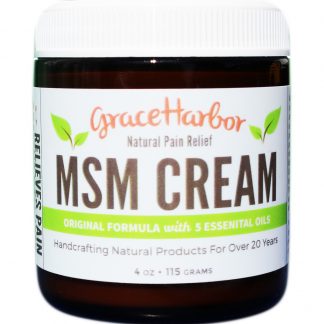Arthritis Pain Relief Methods
Using Electrical Muscle Stimulator
“Dr. Zashin says his patients have gotten good pain relief from a form of electroacupuncture that uses low frequency electrical stimulation to help release endorphins, the body’s natural painkillers.” – Scott J. Zashin, MD,
Private practice in Dallas and Plano, Texas
Medical degree: Dartmouth Medical School
Other: He is listed in the book ‘Best Doctors in America’, and produces a patient newsletter.
The Rhythm Touch 2-Way can bring rapid relief from pain. The stimulation increases circulation and blood flow, reduces the swelling and increases flexibility. Pad and roller placement is non-specific, just place the pads on a muscle close by the effected area and run for as long as you like. The effects of arthritis are oftentimes the greatest in the morning, therefore we recommend using the Rhythm Touch in the evening before bed for at least one session (15 minutes) and in the morning for one session. There is no limit to how much you can use the Rhythm Touch 2-Way, use it as often as you need or like.
The Rhythm Touch is not intended for use in the diagnosis, treatment or prevention of any disease
and/or any other medical condition.
Save 10% on Advanced Foot Energizer, Rhythm Touch Supplies. Join newsletter for code.
More Recommendations for Arthritis Pain Relief and Care
Exercise is an important part of on-going Arthritis pain relief and care. According to the Arthritis Foundation, regular, moderate exercise offers many benefits including joint pain and stiffness, helps build stronger muscle around joints, and helps increase flexibility and endurance. Exercise also helps with overall health and fitness with more energy, better sleep, weight control, self-esteem, and much more. Please read more about how healthy living tools and exercise can be part of your Arthritis care program and download free brochures from the Arthritis Foundation at https://www.arthritis.org/better-living-toolkit. They also offer supplemental books and videos on Arthritis care and exercise.
Brochures from the Arthritis Foundation and UW Medicine
- Exercise and Your Arthritis
- Water Exercise: Pools, Spas and Arthritis (PDF)
- Walking and Arthritis Article at UW Medicine
“Whatever exercise program you decide on you should always consult with your doctor before starting out. Two other types of health professionals that can help you develop an exercise program that fits your specific needs are a physical or occupational therapist. A physical therapist can show you the proper techniques and precautions when performing certain types of exercise. An occupational therapist can show you how to perform daily activities without putting additional stress on your joints and can provide you with splints or assistive devices that can make working out more comfortable.” – Arthritis Foundation
Useful Quotes From the Medical Field
The following are quotes from “More Than Medicine – Some rheumatologists are changing their approach. Using “integrative medicine,” they treat the whole patient” by Judith Horstman, in Arthritis Today
“… Along with conventional medical treatments, these doctors include a range of therapies that aren’t generally considered “medicine,” such as acupuncture, meditation, massage, herbal remedies and some dietary supplements. They are sending patients for yoga and tai chi. Some of them are praying with their patients. But is this good medicine? Yes, say these doctors, especially for people with chronic ailments such as arthritis.”
“Dr. Zashin says his patients have gotten good pain relief from a form of electroacupuncture that uses low frequency electrical stimulation to help release endorphins, the body’s natural painkillers.”
Scott J. Zashin, MD,
Private practice in Dallas and Plano, Texas
Medical degree: Dartmouth Medical School
Other: He is listed in the book Best Doctors in America, and produces a patient newsletter.
Article on Electrical Muscle Stimulation Strength
A home-based protocol of electrical muscle stimulation for quadriceps muscle strength in older adults with osteoarthritis of the knee. – Talbot LA, Gaines JM, Ling SM, Metter EJ. – The Johns Hopkins University, School of Nursing, Baltimore, Maryland 21205-2110, USA. (link is to abstract. Full article is available here.)
“Objective. To determine whether home-based neuromuscular electrical stimulation (NMES) applied to the quadriceps femoris (QF) muscle increases strength, physical activity, and physical performance in older adults with knee osteoarthritis (OA)…
…Conclusion. In older adults with knee OA, a home-based NMES protocol appears to be a promising therapy for increasing QF strength in adults with knee OA without exacerbating painful symptoms. (J Rheumatol 2003;30:1571-8)”
-
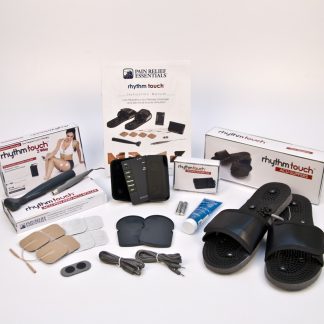
Rhythm Touch Deluxe Package
Sale! Original price was: $770.00.$499.99Current price is: $499.99. Add to cart -
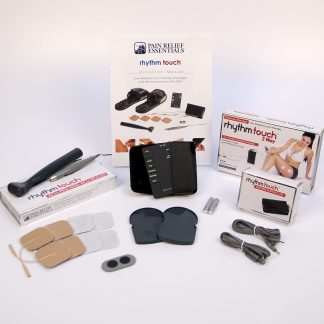
Rhythm Touch Special Bundle
Sale! Original price was: $675.00.$469.99Current price is: $469.99. Add to cart -
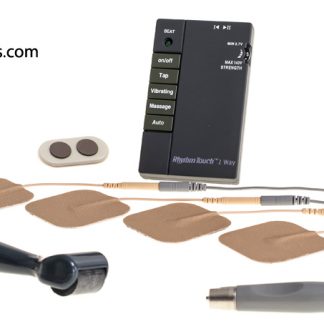
Rhythm Touch Electrical Muscle Stimulator
Sale! Original price was: $599.95.$449.95Current price is: $449.95. Add to cart

